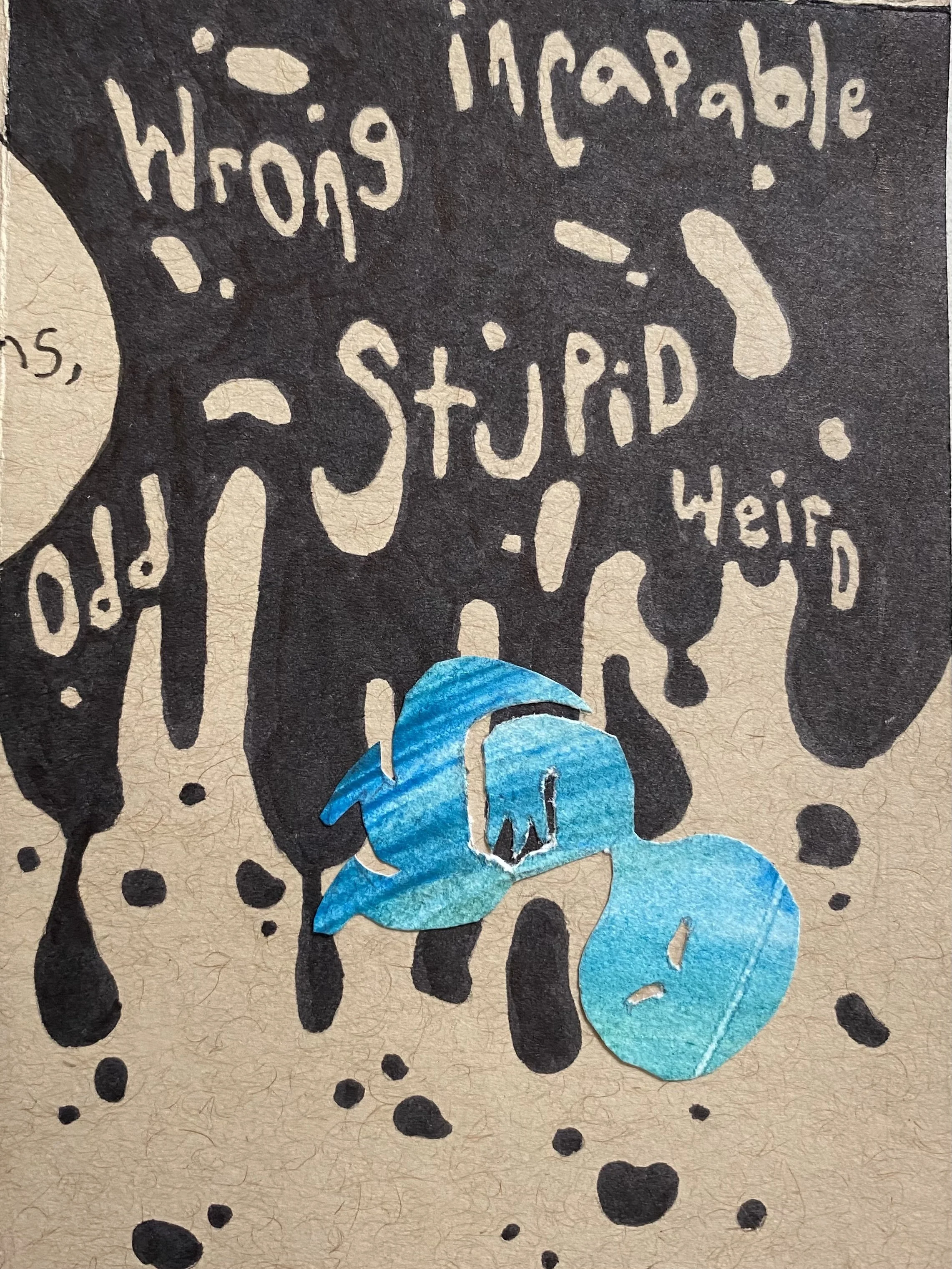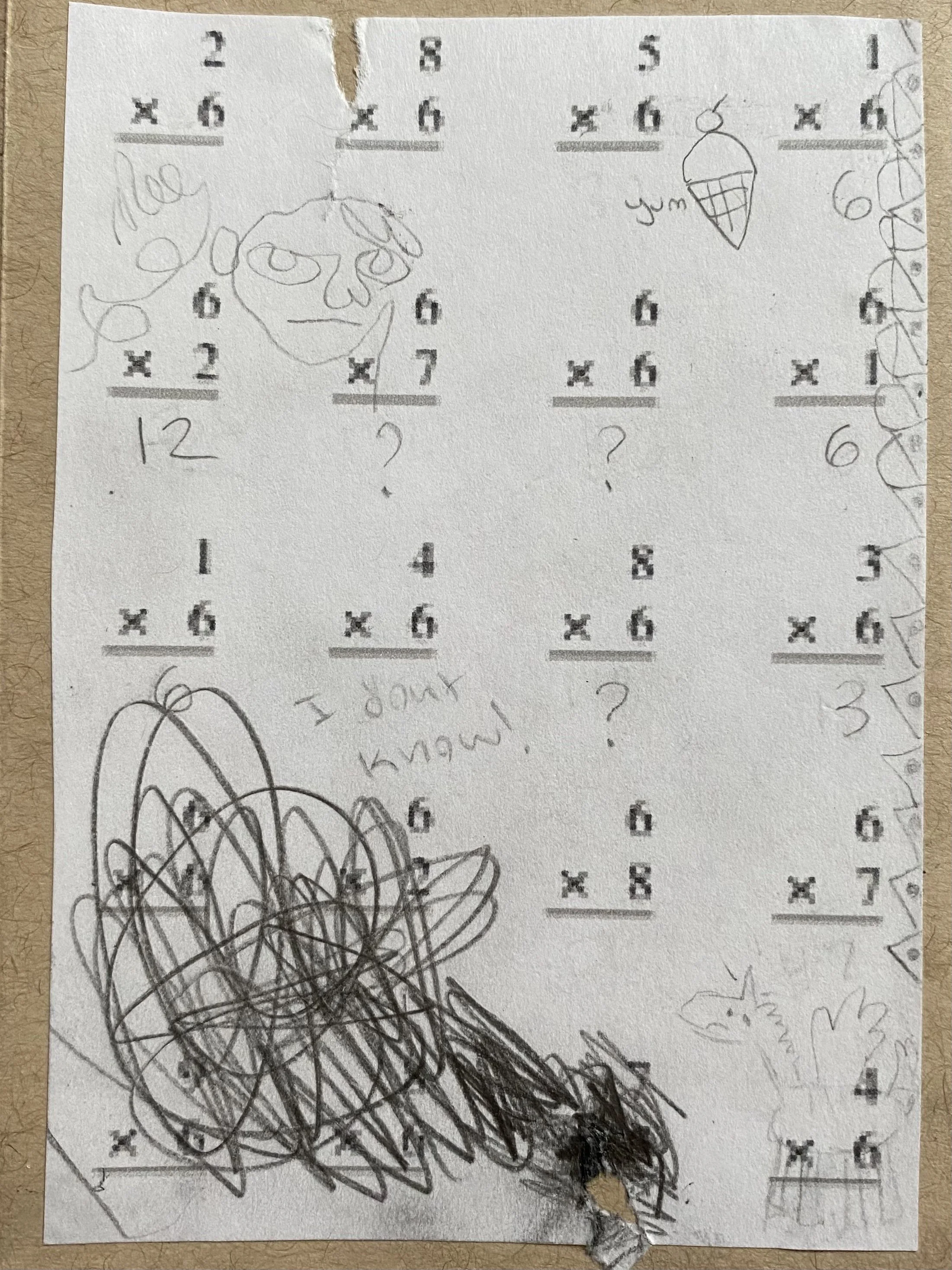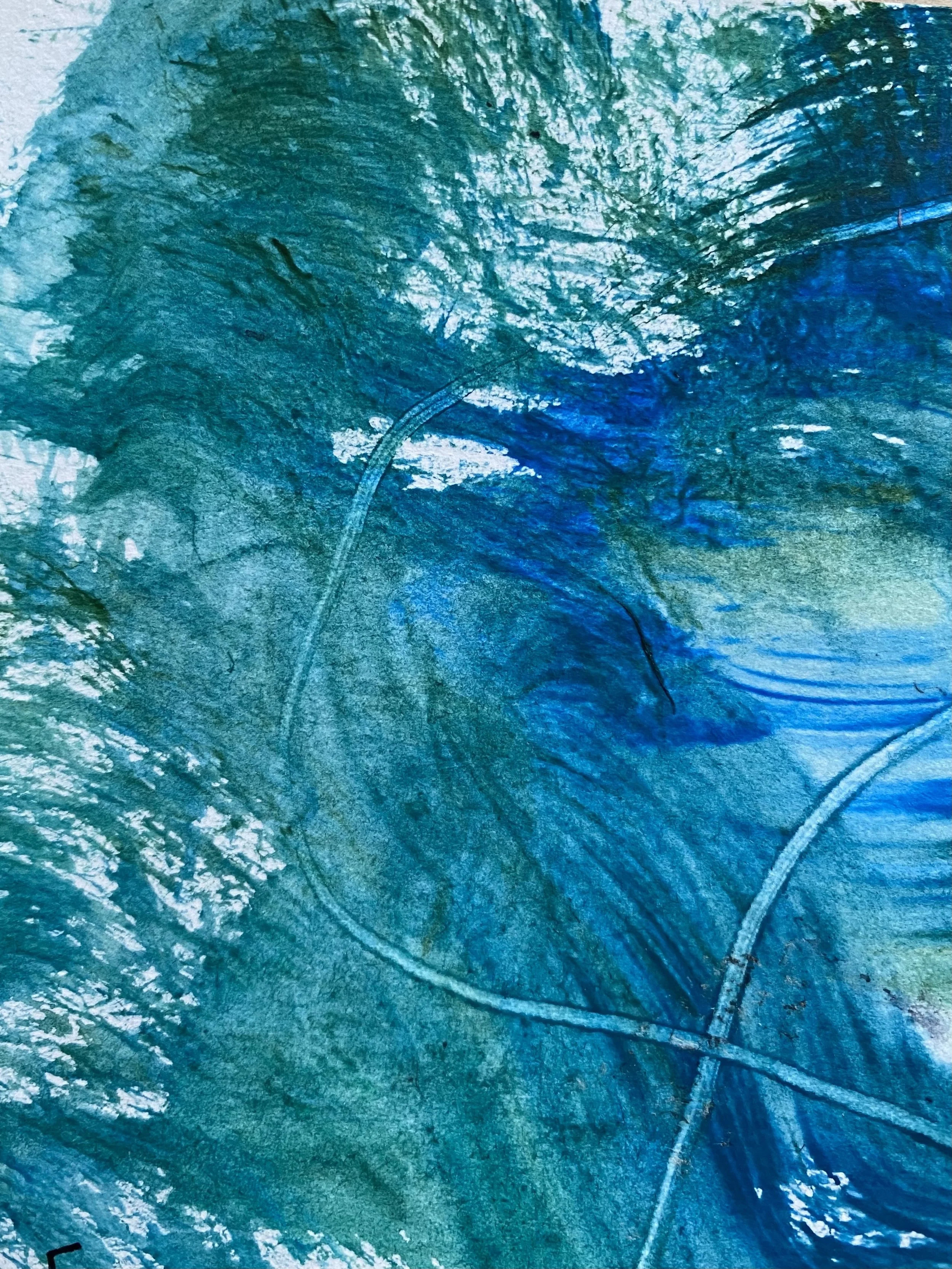Dyscalculia Zine Art
My dyscalculic daughter recently created a thoughtul art piece about the hardships of dyscalculia. These images are from her "zine," a small booklet or mini magazine that is used to convey a message, display art, and spread provactive ideas.
Each artistic expression is followed by her explanation of her thought process.
Cover
"It’s kind of supposed to look like a brain, or a person, like a very loose depiction. I spelled it backwards because it’s like being different. Different thinking. And the blue dot is what I wanted to use to represent dyscalculia. It’s this little part of our mind. And I use that color throughout the book to represent dyscalculic people."
Page 1
"The first page is… I wanted to look up the dictionary definition of dyscalculia: 'Severe difficulty in making arithmetical calculations as a result of a brain DISORDER,' which seemed very robotic and cold to me. The guy is sort of like a shadow. If he was looking down at you, with the light behind him, the front is in shadow."
Page 2
"I put a lot of thought into this one. The goop is a kind of like... it sticks to you, all the things that people say. And I positioned the person kind of floating-like because I wanted you to feel like you could get lost in other people’s perceptions of your mind and of you…and forget about the great things about having dyscalculia. And where the blue person's hand is kind of where the black goop is dripping down so it’s kind of like he’s holding onto it. It’s also by his heart. It really affects how people think of themselves when they hear that they are stupid or incapable. The goop is hurting him emotionally."
Pages 3-4
"This is a spread, you turn it sideways. The scribbles are the frustrations of being called these things. And I didn’t want to write it down because I didn’t want it to be that specific, but when I was making this page, I was thinking about the school system putting people into boxes, this is a dyscalculic person in the box, surrounded by the frustrations and scribbles.
"I had to go back and make the hands a little more menacing looking because I got focused on making them look realistic so that then they were too round-looking and you thought that person was going to give them a hug."
Page 5
"This page… I was thinking that I was getting a little metaphorical and I needed a page that most people could understand, like the more literal thinkers. So, there is a math page or a multiplication page that I would have to do in 3rd grade. You can see the frustration of not knowing the answer and having to be on a time limit. You can see where someone scribbled so hard that the paper was ripped up. There are little doodles all over the page. Some of the answers are wrong and others have question marks. Sometimes I will doodle patterns on the sides of my pages like the triangles and dots here, then I might add loops on top of them. Then I’m like, 'Oh that looks like an ice-cream cone.' So then, I doodle an ice-cream cone next to it. That’s just what happens when you are doing math."
"The back cover is the same pattern that I was using to cut out the dyscalculic people. I had this giant piece of paper that I painted over for the background, and the random swoops and scratches are because it was one of the things we were learning in art at the time, sgraffito."
I hope you found this art intriguing and insightful. Perhaps it connects to your own experience with dyscalculia.
If you want to learn more about dyscalculia awareness, education, and support, sign up for my monthly email newsletter! Privacy respected, no spam, unsubscribe anytime.





